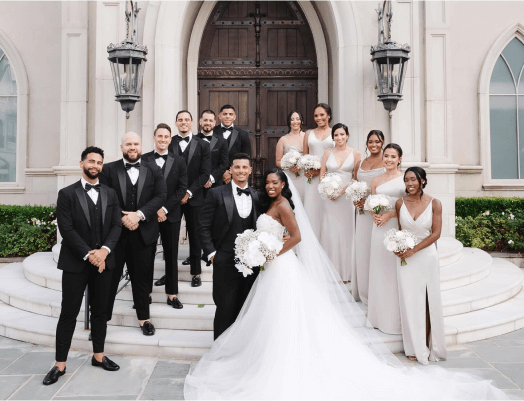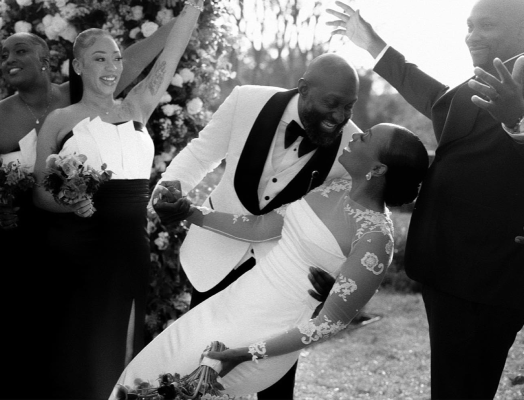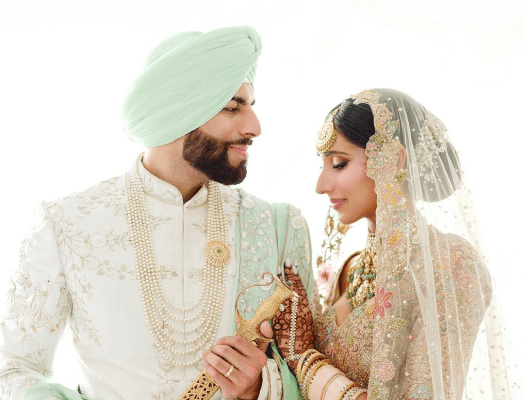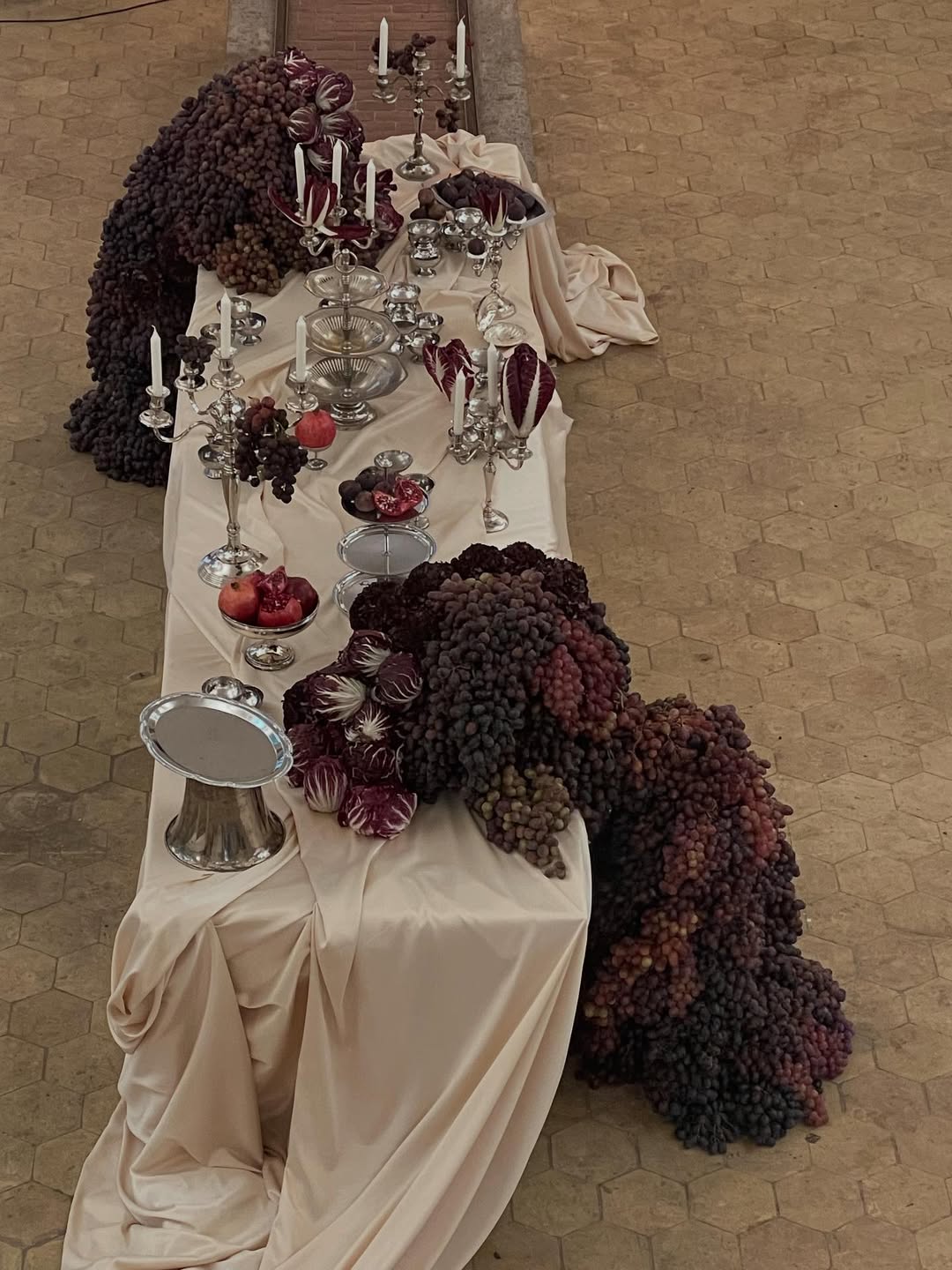Step by Step Guide to Planning Your Dream Wedding
- Author: Natali Grace Levine
- Reading time: 25 min 55 sec
- Publication date: 10/08/2025
- Updated: 12/08/2025
- Step 1 – Define Your Wedding Vision
- Step 2 – Set a Realistic Budget
- Step 3 – Build Your Guest List
- Step 4 – Choose the Perfect Date and Venue
- Step 5 – Hire Key Vendors Early
- Step 6 – Decide on Wedding Style & Design
- Step 7 – Find and Secure Attire
- Step 8 – Plan the Ceremony
- Step 9 – Organize the Reception
- Step 10 – Manage Invitations & Stationery
- Step 11 – Organize Transportation & Accommodation
- Step 12 – Gifts, Registry & Favor Management
- Step 13 – Beauty & Wellness Countdown
- Step 14 – Legal & Administrative To-Dos
- Step 15 – Timeline & Rehearsal
- Step 16 – The Wedding Day
- Your Dream Wedding Starts Now
Your engagement glow is real, and you're ready to start planning. But it can quickly shift from exciting to overwhelming when you're staring at a thousand decisions and no clear path forward. Sound familiar? But did you know that a structured, step-by-step approach transforms planning from chaotic to a completely manageable task. You'll know exactly what to do, when to do it, and how to make decisions that reflect who you are as a couple. This isn't about following rigid rules—it's about giving you the framework to build something authentically yours while keeping your sanity intact.


We'll walk you through every essential phase, complete with practical timelines, expert insights, and the kind of real-talk advice that'll save you time, money, and stress. Whether you're envisioning an intimate garden ceremony or a grand ballroom celebration, this step by step wedding planning guide is for you. Let's turn your vision into reality.
Find Your Perfect Wedding Vendors
Step 1 – Define Your Wedding Vision


Before you dive into spreadsheets and vendor emails, pause. Your wedding vision comes first—before the logistics, before the budget battles, before anything else. This is where you dream without limits and figure out what truly matters to both of you.
Clarify Your Priorities
Sit down together and ask: What does our perfect day actually look like? For some of you, it's an intimate gathering of your closest 50 people. For others, it's a 200-person celebration with everyone you've ever loved. Maybe you're obsessed with the venue, or perhaps photography is non-negotiable because you want these memories preserved flawlessly.
Identify your top three priorities. Is it the location? The food experience? The atmosphere? Having live music? Once you know what you absolutely can't compromise on, every other decision becomes infinitely easier.
Mood & Style
Now let's talk aesthetics. What feeling do you want your wedding to evoke? Romantic and timeless? Modern and minimalist? Bohemian and free-spirited? Luxurious and opulent? Deeply rooted in your cultural heritage?
Your style isn't just about looking good—it's about creating an atmosphere that feels like you. Think about the weddings or events you've attended that moved you. What made them special? That's your starting point.
Dream Board
This is where the fun begins. Create a visual collection of everything that makes your heart skip: Pinterest boards, Instagram saves, magazine clippings, fabric swatches, screenshots of color palettes. Gather inspiration without filtering yourself yet. As your collection grows, you'll notice patterns emerging. Maybe you keep saving images with candlelight and greenery. Or perhaps every save features bold geometric designs and jewel tones. These patterns reveal your authentic vision—trust them. And remember, when learning how to plan a wedding step by-step, starting with a clear vision board will set the tone for every decision you make.
Step 2 – Set a Realistic Budget


Let's talk about the foundation of this step by step guide to planning a dream wedding: your budget. We know it's not the most romantic part of wedding planning, but getting this right from the start prevents heartbreak later when you fall in love with something you can't afford.
Break Down Costs
Your wedding budget isn't one number—it's a collection of line items that need to work together. Here's where your money typically goes:
- Venue and catering usually eat up 40-50% of your budget. This includes the space rental, food, beverages, and service staff.
- Photography and videography typically run 10-15% because these memories last forever.
- Your attire (dress, suit, alterations, accessories) takes another 8-10%.
- Flowers and décor can range from 8-12% depending on your vision.
- Entertainment (band or DJ) sits around 8-10%.
- Then you've got stationery, favors, transportation, hair and makeup, and your officiant filling in the remaining percentages.
Create a spreadsheet where you allocate percentages based on your priorities from Step 1. If photography is your top priority, bump that percentage up and adjust elsewhere.
Hidden Expenses
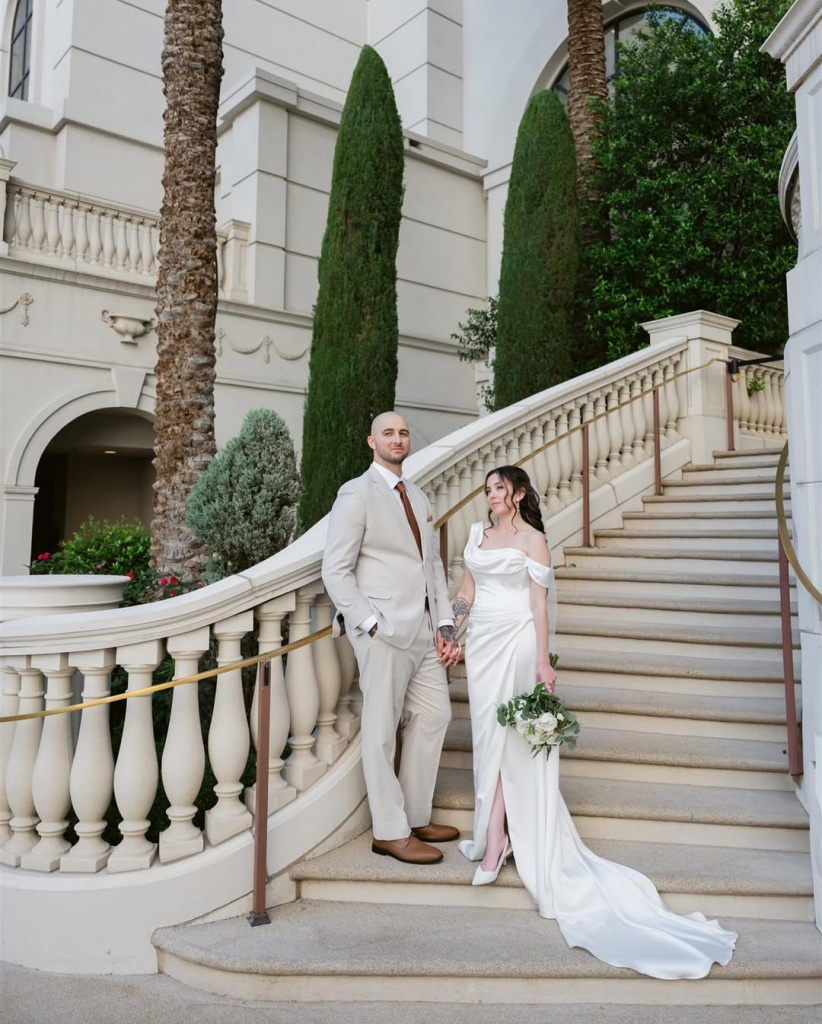
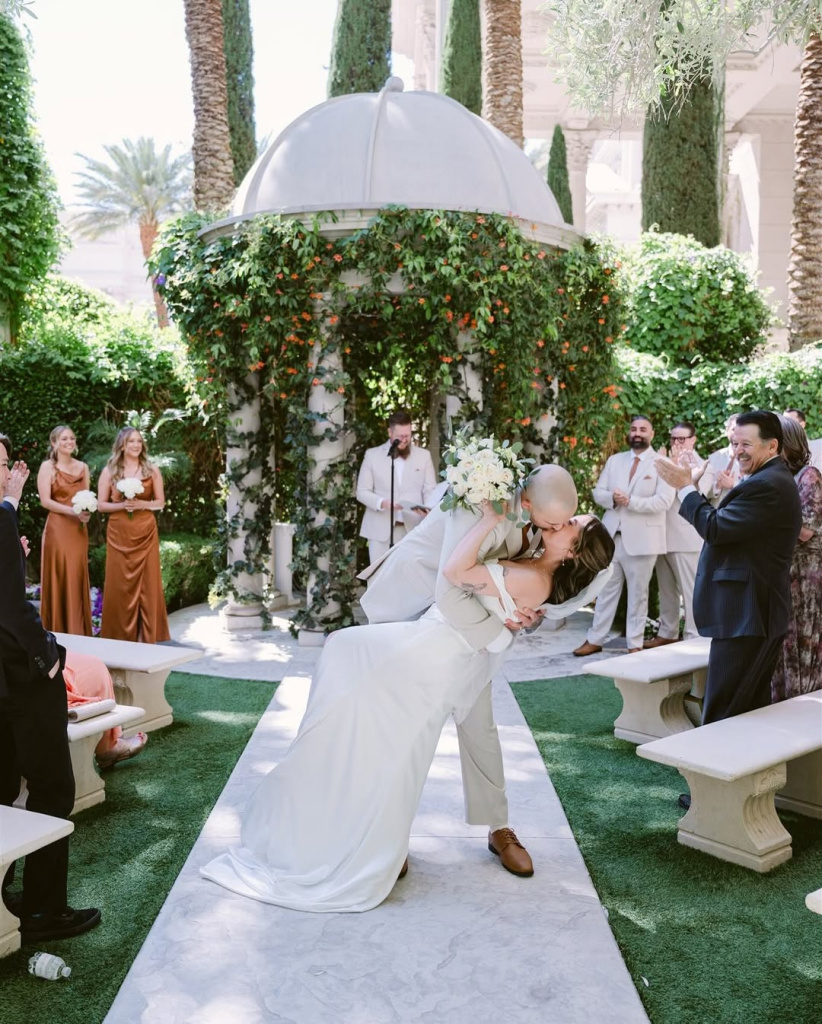
Here's what catches couples off-guard: the costs you don't see coming. Service charges and gratuities can add 20-25% to your venue and catering bill. Sales tax varies by location but can be substantial. Overtime fees if your celebration runs past contracted hours. Delivery and setup charges for rentals. Alterations for your attire. Postage for invitations (yes, it adds up fast). Vendor meals at the reception.
Build a 10-15% buffer into your total budget for these sneaky extras and unexpected costs. You'll thank yourself later.
Budget Management Tools
Don't try to track everything in your head or on random scraps of paper. Use tools designed for this: most wedding planning apps have built-in budget trackers. Google Sheets works beautifully for customized tracking. Or hire a wedding planner who manages this for you—their industry connections often save you more than their fee costs. When thinking about how to plan your dream wedding, keeping your budget organized is one of the smartest first steps.
Step 3 – Build Your Guest List


Your guest list is the domino that affects everything: your venue size, your catering costs, your seating arrangements, even your invitation budget. This is often the most emotionally charged decision you'll make, so approach it thoughtfully.
The number of people you invite directly multiplies your per-person costs. If your caterer charges $150 per head, the difference between 100 and 150 guests is $7,500. That's real money that could go toward your dream photographer or your honeymoon.
Start with your immediate family: parents, siblings, grandparents. These are your non-negotiables. Next, add your closest friends—the people you talk to regularly, who've been there for significant moments. Then consider extended family: aunts, uncles, cousins. This is where you'll need to make choices. Work colleagues and acquaintances come last. Be honest about who you actually want there, not who you feel obligated to invite.
Many couples create an "A-list" and a "B-list." Your A-list gets invited immediately. If you receive early declines and have room in your budget and venue, you send invitations to your B-list. Just make sure your B-list invitations go out with enough notice to be respectful—at least two months before your wedding.
Have conversations with your families early. If parents are contributing financially, they typically expect some say in the guest list. Establish clear numbers for each side and stick to boundaries you're comfortable with.
Step 4 – Choose the Perfect Date and Venue


Your date and venue are intrinsically linked—you can't book one without considering the other. This decision sets the entire tone for your celebration, so let's make it count.
Season and Timing Considerations
Each season offers something different. Spring brings blooming flowers and mild weather but can be unpredictable with rain. Summer guarantees warmth and long daylight but comes with peak pricing and vendor availability battles. Fall delivers stunning foliage and comfortable temperatures—it's the most popular season, so book early. Winter offers dramatic aesthetics and often lower prices, but you're dealing with potential weather complications and holiday conflicts.
Think about your vision from Step 1. Does it require outdoor space? Then risky weather seasons might not work. Do you want lush greenery? Spring or summer is your window. Dreaming of a cozy, intimate vibe? Fall and winter deliver that naturally.
Destination vs. Local Weddings
Destination weddings offer built-in intimacy (smaller guest counts because of travel), incredible backdrops, and a vacation vibe. But you're planning from afar, which requires extra trust in vendors, and your guests face higher costs to attend.
Local weddings give you more control, easier planning logistics, and better accessibility for your guests. You'll likely have a larger guest count, which affects your budget but also means celebrating with more people you love.
Indoor vs. Outdoor Spaces
Outdoor venues offer natural beauty, open space, and stunning photo opportunities. But you need backup plans for weather, additional rentals (tent, lighting, temperature control), and you're at nature's mercy.
Indoor venues provide climate control, predictable conditions, and often include more amenities. They can feel more formal, but the right venue with great bones (exposed brick, high ceilings, interesting architecture) brings character without weather stress.
Booking Timeline
For in-demand venues and popular dates (Saturday evenings in peak season), you're looking at booking 12-18 months in advance. Off-season or weekday weddings give you more flexibility—sometimes just 6-9 months out works.
Visit venues in person before committing. Photos lie. You need to feel the space, understand the flow, and envision your celebration there. Ask about what's included (tables, chairs, linens, sound system), restrictions (noise ordinances, alcohol policies, preferred vendor lists), and the fine print (payment schedules, cancellation policies, setup and breakdown times).
Step 5 – Hire Key Vendors Early


Once your date and venue are locked, immediately shift to securing your dream team. In-demand vendors book up fast—especially photographers, videographers, and planners. If you delay, you'll lose your first choices and end up settling, which you'll regret when you're looking at your wedding photos for the next 50 years.
- Wedding Planner or Coordinator: This decision impacts everything else. Full-service planners guide you through the entire process, recommend vendors, manage logistics, and handle day-of execution. Day-of coordinators step in for the final month to confirm details and run the timeline. Month-of coordinators bridge the gap. If your budget allows it, a planner saves you countless hours and costly mistakes.
- Photographer and Videographer: You'll look at these images forever. This isn't where you cut corners. Review portfolios carefully—not just for technical skill but for style. Do they capture candid moments or prefer posed shots? Is their editing bright and airy or moody and dramatic? Meet them in person or on video. You'll spend hours with this person on your wedding day; you need to genuinely like them.
- Caterer: Food is one of the most memorable aspects for your guests. Schedule tastings with your top choices. Ask about their approach to dietary restrictions, service style options (plated, buffet, family-style, stations), and what's included in their pricing. References are crucial here—reach out to recent clients.
- Florist: Your florist brings your visual concept to life. Share your inspiration boards and budget openly. Great florists can suggest seasonal alternatives that achieve your vision for less. Discuss not just your bridal bouquet but ceremony arrangements, centerpieces, boutonnieres, and any installation pieces you're dreaming of.
- Entertainment (DJ or Band): This makes or breaks your reception energy. Live bands offer incredible atmosphere but cost more and need more space. DJs provide versatility and can read the room, adjusting on the fly. Watch them perform at other events if possible, or at minimum, review their demo videos and client testimonials.
- Officiant: Whether religious or secular, your officiant sets the ceremony tone. Meet with them to discuss your vision, any traditions you want to include, and their style. Some offer pre-marriage counseling, which many couples find valuable beyond the ceremony itself.
- Hair and Makeup Artists: Book trials several months before your wedding. Bring inspiration photos but also trust their professional advice about what translates well in photos and holds up through a long day. Confirm how many people they can handle, timing requirements, and whether they travel to your getting-ready location.
For all vendors, read contracts carefully before signing. Understand cancellation policies, what happens if they can't fulfill their commitment (backup plans), payment schedules, and what's specifically included in your package.
Step 6 – Decide on Wedding Style & Design


Now we get into the visual magic—translating your vision into tangible design elements that create a cohesive, stunning celebration. This is where your Pinterest boards become reality.
Color Palette Selection
Your color palette does heavy lifting, creating mood and tying everything together. Choose 2-3 main colors plus 1-2 accent colors. Consider how colors photograph (some look dramatically different in photos), how they work in your venue's existing environment, and seasonal appropriateness.
Jewel tones (emerald, sapphire, burgundy) feel rich and luxurious. Pastels (blush, lavender, sage) create soft romance. Neutrals (ivory, taupe, gold) offer timeless elegance. Bold combinations (navy and coral, black and white with pops of color) make dramatic statements.
Test your palette against your venue. That dusty blue you love might clash with your venue's existing drapes, or those warm terracotta tones might look muddy in dim lighting.
Theme Inspiration
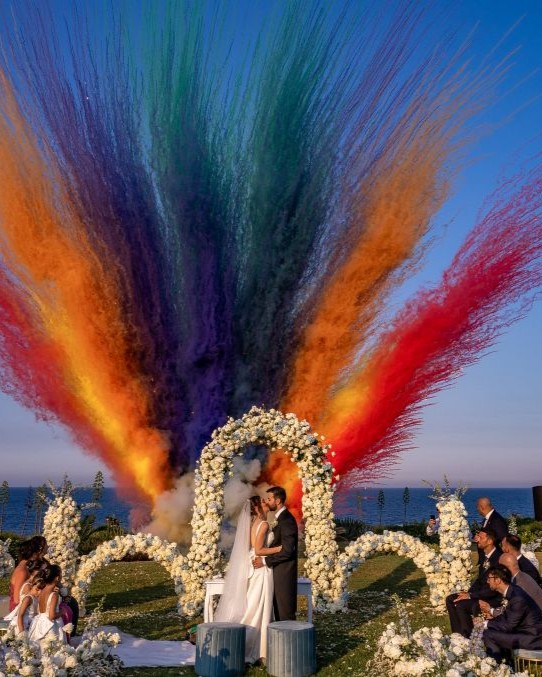
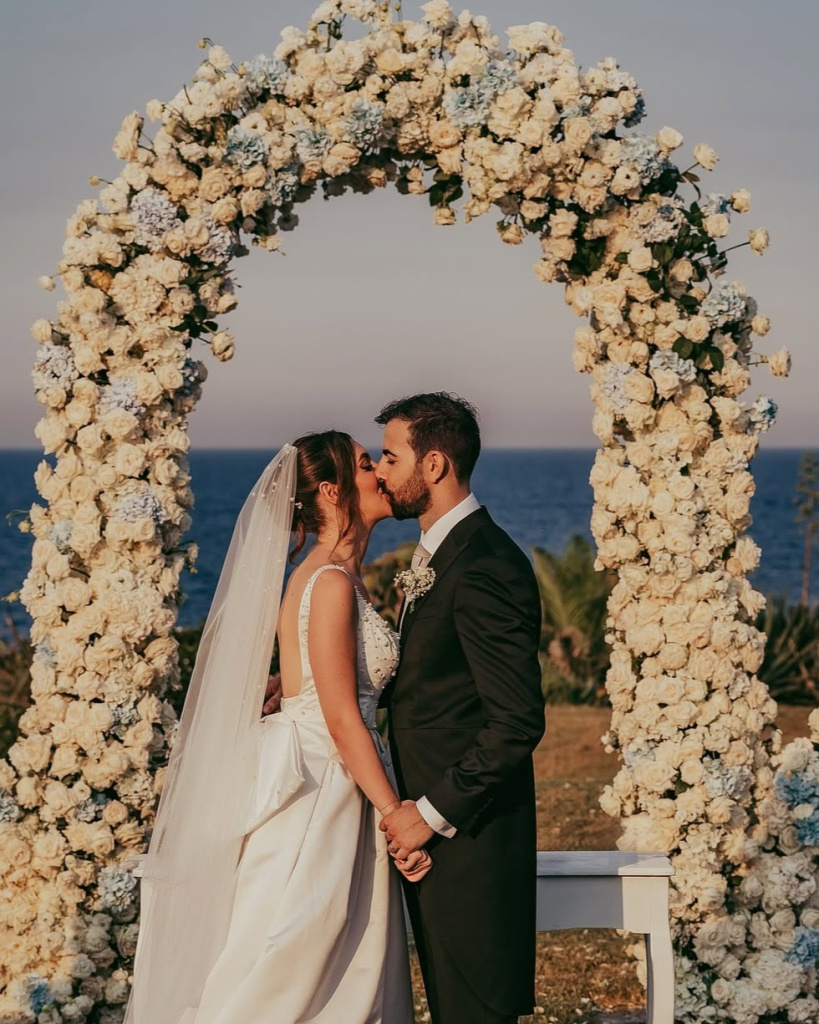
Your theme isn't about gimmicks—it's about creating a consistent atmosphere that feels intentional. Classic elegance features traditional elements, symmetry, and timeless beauty. Rustic chic combines natural textures, organic elements, and relaxed sophistication. Garden party embraces outdoor beauty, lush florals, and fresh, natural settings. Luxury black-tie delivers glamour, opulence, and refined details. Cultural fusion honors heritage while blending traditions in meaningful ways.
Your theme should feel authentic to who you are as a couple. Don't force something because it's trending if it doesn't resonate with your personalities.
Décor Breakdown
- Ceremony backdrop: This is where you'll say your vows—make it meaningful. Floral arches, fabric draping, geometric structures, or simply the natural beauty of your venue.
- Tablescapes: Your reception tables are prime real estate for visual impact. Consider centerpiece height (mix tall and low for visual interest), linens (texture matters as much as color), place settings, menu cards, and table numbers.
- Lighting: Never underestimate lighting's transformative power. String lights create warmth. Uplighting can completely change your venue's ambiance. Candles add romance. Spotlights highlight specific areas.
- Floral installations: Beyond centerpieces and bouquets, think about statement pieces—hanging installations, floral chandeliers, ceremony aisle markers, bar area arrangements.
Work with your florist and decorator to create a cohesive vision. Share mood boards, venue photos, and be clear about your budget so they can suggest solutions that achieve the look without unnecessary spending.
Step 7 – Find and Secure Attire


What you wear becomes part of your wedding story and legacy. These are the images your grandchildren will see. This deserves time, thought, and joy—not stress.
For You, the Bride
Start shopping 9-12 months before your wedding. Wedding dresses typically take 6-8 months to arrive, then you need time for alterations (2-3 months minimum). Bring only 2-3 trusted people to appointments—too many opinions create confusion and stress. Know your budget before you start trying on dresses; falling in love with something you can't afford is heartbreaking.
Be open to styles you hadn't imagined. What looks stunning on a hanger might not flatter your body, and that dress you walked past might be the one when you try it on. Trust your consultant's expertise while honoring your instincts. Don't forget accessories: veil or headpiece, jewelry, shoes (break them in!), undergarments (proper foundation garments make your dress fit better), and something blue if you're honoring that tradition.
Schedule your final fitting 2-3 weeks before the wedding. You'll have your actual shoes, undergarments, and any shapewear, so your seamstress can perfect the fit exactly.
For Your Partner
Suit or tuxedo shopping starts around the same time. Buying offers more flexibility and long-term value if your partner will wear it again. Renting works well for specific styles or if this isn't their typical wardrobe.
Custom tailoring transforms a good suit into a great one. Even rental tuxedos benefit from minor alterations for the perfect fit. Details matter: cufflinks, tie or bowtie, pocket square, shoes, belt, watch. These small touches pull the entire look together.
For the Wedding Party
Decide on your approach early: matching dresses and suits, same color in different styles, or simply a color palette with freedom to choose. The trend is moving toward giving your wedding party more autonomy, which often makes them more comfortable and happy. Order attendant attire 6-8 months out. Provide clear direction and deadlines, but be sensitive to varying budgets in your group.
Cultural Attire Considerations
If you're incorporating cultural traditions, research appropriate attire, consult family members who can guide you, and give yourself extra time. Some cultural garments require specialized tailors or need to be made custom. You might wear multiple outfits throughout your celebration—plan for seamless transitions if that's the case.
Step 8 – Plan the Ceremony


Your ceremony is the heart of the entire day—the reason everyone's gathered. Every other element is important, but this is the moment that matters most. Let's make it deeply personal and meaningful.
Structure
Most ceremonies follow a basic flow: Processional (wedding party and couple enter), welcome and opening remarks from your officiant, readings or musical interludes (optional but add depth), personal vows or traditional vows, ring exchange, pronouncement (the "you may kiss" moment), and recessional (your joyful exit as newlyweds).
This structure is flexible. You can condense it to 15 minutes or expand it to 45 minutes depending on how many meaningful elements you include.
Unique Elements
This is where you make the ceremony yours. Cultural traditions might include jumping the broom, breaking the glass, tea ceremonies, handfasting, or circling rituals. Personal vows allow you to speak directly from your heart—write them yourself or use traditional vows with personal additions. Symbolic rituals like unity candle lighting, sand ceremonies, or tree planting ceremonies represent your union visually. Including parents or siblings in readings, blessings, or symbolic gestures acknowledges the families joining together. Just ensure everyone participating feels comfortable with their role.
Music Selection
Music creates emotional resonance. Choose processional music for the wedding party (usually instrumental and elegant), a special song for the bride's entrance (this is your moment), ceremony music during readings or unity rituals (optional), and recessional music (celebratory and joyful for your exit).
Live musicians—string quartet, guitarist, vocalist—add elegance. Recorded music works perfectly too if that fits your budget better. Whatever you choose, make sure your venue's sound system can handle it or coordinate with your DJ or band.
Work with your officiant on timing and flow. Rehearse the ceremony at least once so everyone knows where to stand, when to move, and what to expect.
Step 9 – Organize the Reception


Your reception is where everyone celebrates together. This is about creating an experience your guests will remember—and that requires thoughtful planning across multiple elements.
Food & Drink


Schedule tastings with your caterer 4-6 months before the wedding. Bring someone whose opinion you trust (and who will be honest if something isn't great). Taste everything: appetizers, main courses, sides, desserts.
Discuss service style carefully. Plated dinners feel formal and allow for precise timing but require collecting meal choices from guests. Buffets offer variety and let guests control portions but can create lines and pacing challenges. Family-style creates warmth and encourages sharing but requires ample table space. Food stations provide variety and flow but need strategic placement to prevent congestion.
Accommodate dietary needs without making anyone feel singled out. Vegetarian, vegan, gluten-free, and allergy-friendly options should be seamlessly integrated into your menu.
Bar packages range from open bar (you cover everything) to cash bar (guests pay) to drink tickets (limited drinks per guest). Open bars are most generous and appreciated but most expensive. Consider signature cocktails that reflect your personality—it's a fun detail guests remember.
Entertainment & Timeline
Your reception timeline orchestrates the entire evening. A typical flow: Cocktail hour (immediately after ceremony while you take photos, usually one hour), grand entrance (introducing the wedding party and you as a married couple), first dance (immediately after entrance or after dinner), welcome toast (usually by parents or person who officiated), dinner service, toasts and speeches (best man, maid of honor, others as desired), cake cutting, parent dances (optional), open dancing, special dances (anniversary dance, bouquet toss if you're doing it), last dance, and send-off.
Don't over-program your reception. Long speeches and too many planned moments mean less dancing and socializing. Keep toasts to 3-5 minutes maximum.
Your DJ or band is crucial here. An experienced entertainer reads the room, knows when to play high-energy songs and when to slow things down, and keeps the energy flowing. Share your must-play and do-not-play lists, but also trust their expertise.
Seating Chart Tips
Start your seating chart 2-3 weeks after your RSVP deadline. Use online tools or sticky notes on a board so you can easily move people around.
Head table options include a sweetheart table (just you two), a head table with the wedding party, or no head table at all (you sit at a regular table with family or close friends).
- Family placement: Immediate family typically sits near the front. If families are large, split them across multiple tables rather than one enormous table.
- Mixing guests: Seat people with common interests or connections. Don't just put all the college friends together and all the work friends together—mix age groups and social circles so people make new connections.
Avoid seating divorced parents at the same table unless they've explicitly said they're comfortable with it. Have a singles table or mix singles among other tables rather than isolating them awkwardly.
Step 10 – Manage Invitations & Stationery


Your invitations are your guests' first tangible glimpse into your wedding. They set expectations and provide crucial information—handle this step with care.
Save the Dates vs. Invitations
Save the dates go out 6-8 months before the wedding (8-12 months for destination weddings). They're a heads-up: reserve this date, more details coming. Include your names, wedding date, location (city and state), and that a formal invitation will follow. Skip specific venues and timing.
Formal invitations go out 8-10 weeks before the wedding. These include all the actual details: specific venue addresses, time, dress code, RSVP deadline (typically 3-4 weeks before the wedding), and any wedding website information.
Stationery Checklist
Your complete stationery suite might include: save the dates, formal invitations (ceremony and reception details), RSVP cards with pre-addressed, stamped envelopes, details card (accommodations, transportation, dress code, website), rehearsal dinner invitations (for that subset of guests), ceremony programs (optional but helpful), menu cards, table numbers, place cards (if you have assigned seating), signage (welcome sign, bar menu, dessert table, directional signs), and thank-you cards (order these early so you're ready after the wedding).
Everything should feel cohesive—matching or complementary designs, consistent color palette, same general style.
Digital vs. Print Pros & Cons
Print invitations feel traditional and special, give guests something tangible to display, and work for all age groups and tech comfort levels. But they're more expensive, require more lead time, and use more resources.
Digital invitations save money and trees, allow easy tracking of RSVPs, and enable quick updates if details change. But they might feel less formal to some guests, can get lost in spam folders, and may not work for older relatives less comfortable with technology.
Many couples go hybrid: print invitations for the wedding itself, digital for other events like welcome parties or farewell brunches. Or send save the dates digitally and splurge on beautiful print invitations.
Create a wedding website regardless. It's your central information hub where guests can find accommodations, registry links, schedules for multiple events, travel information, and dress code guidance. Update it as details solidify.

Step 11 – Organize Transportation & Accommodation


Your guests are traveling to celebrate you—make that journey as smooth as possible. Thoughtful logistics show you care about their experience.
Hotel Blocks
Reserve room blocks 6-9 months before your wedding at 2-3 hotels at different price points. Negotiate group rates (typically 10-15% off), ask about courtesy blocks (holds rooms without financial penalty if they don't fill), and find out the cutoff date when unreserved rooms are released.
Choose hotels near your venue or near airports if most guests are flying in. Include this information on your wedding website and details card.
Guest Transportation
Shuttle services between hotels and your venue eliminate parking concerns, allow guests to drink freely, and ensure everyone arrives on time. Budget for round-trip service covering ceremony start and reception end, plus potentially a mid-reception departure for guests with children or who don't want to stay late.
For destination weddings, airport transportation for arrival and departure days is incredibly appreciated. Even just clear information about taxi services, rideshare availability, and estimated costs helps guests plan.
Bridal Party Coordination
Your wedding party needs clear direction on when and where to be. Send a detailed timeline 1-2 weeks before the wedding covering: where to arrive for getting ready, what time hair and makeup starts, when photos begin, where to store personal belongings, transportation to venue, and where they need to be throughout the evening.
If you're getting ready at different locations (bridal party at one place, groomsmen at another), coordinate transportation to the venue. Don't assume everyone has cars or knows the way.
Step 12 – Gifts, Registry & Favor Management


Registries help your guests give you what you actually need. Favors are optional thank-yous. Neither should stress you out—let's keep this simple.
Registry Setup
Create your registry 2-3 months after engagement so guests can shop early if they want to. Register at 2-3 stores at different price points—one traditional (department store or home goods store), one online, and potentially one specialized (outdoor store if you're adventurous, bookstore if you're readers).
Register for various price ranges. Not everyone can afford expensive items, but you also deserve some dream pieces. Include:
- Basics you need (everyday dishes, sheets, towels)
- Upgrades to what you already have (nice cookware, quality appliances)
- Experiences (honeymoon fund, date night fund, home improvement contributions)
Keep your registry updated as items are purchased. Nothing frustrates guests more than finding your registry empty or seeing duplicates.
Honeymoon registries and cash funds are increasingly common and perfectly acceptable. Some guests prefer giving traditional gifts, so offer both options.
Wedding Favors
Favors are entirely optional—your guests don't expect them, and they're often forgotten on tables. If you do them, make them meaningful or useful: Edible favors (local honey, homemade jam, cookies, regional treats) get used. Practical favors (bottle openers, coasters, candles) serve a purpose. Charitable donations in your guests' names honor causes you care about. Personalized items that reflect your relationship or wedding location create memories. Skip favors entirely if they stress you or strain your budget.
Step 13 – Beauty & Wellness Countdown


You want to look and feel your absolute best on your wedding day. That requires planning, not last-minute panic. Let's build a timeline that has you glowing with confidence.
Skincare Timeline
- 6 months out: Establish a consistent routine if you don't have one. See a dermatologist or esthetician for a professional consultation. Address any major concerns (acne, texture issues, pigmentation) now. Major treatments take time to show results. Start drinking more water (you'll hear this constantly, but it genuinely helps).
- 3 months out: Schedule regular facials monthly if your budget allows. This gives your skin time to adjust. No starting dramatic new products or treatments now—you're in the "safe zone" where you maintain what works. Consider professional teeth whitening if that's on your list (it takes 2-4 weeks for full results). Get into a rhythm with your routine so your skin is predictable.
- 1 month out: No new skincare products or treatments. Your skin needs to be stable and calm. Keep up with facials if you've been doing them. Focus on hydration, sleep, and managing stress (stress absolutely shows in your skin).
- 1 week out: Final facial should be gentle and hydrating, not exfoliating or aggressive. You want a glow, not irritation or breakouts. Continue drinking tons of water. Get enough sleep. This is not the week to party hard with your bridesmaids.
- Day before: Avoid alcohol (dehydrating), salty foods (bloating and puffiness), and anything new. Get a good night's sleep. Use a gentle face mask. Deep condition your hair. Simple, calm, prepared.
Fitness and Mental Health
If you want to get in shape for your wedding, start early—6+ months gives you time for sustainable changes. Crash diets and extreme workout programs right before the wedding leave you exhausted and stressed.
Find movement you enjoy, not exercise you dread. You're more likely to stick with it. Consider couples workouts as quality time together.
But here's the real talk: your mental health matters more than fitting into a specific dress size. Wedding planning is stressful. You might feel pressure from family, budget stress, decision fatigue, or unexpected conflicts.
Take breaks from planning. Maintain your normal hobbies and social connections. Consider pre-marital counseling even if your relationship is strong—it provides tools for navigating married life and helps you discuss important topics you might not have covered.
If you're feeling overwhelmed, anxious, or not enjoying what should be an exciting time, talk to someone—whether that's a therapist, your partner, or a trusted friend. Your well-being matters infinitely more than perfect napkin colors.
Hair and Makeup Trials
Schedule trials 2-3 months before your wedding. Bring inspiration photos but also be realistic about what works with your features, hair texture, and personal style. Your wedding day isn't the moment to try a dramatically different look—you want to feel like an elevated, beautiful version of yourself, not like someone else.
Take photos in different lighting during your trial. What looks perfect in a salon might photograph differently. If you're not happy, speak up and request adjustments.
Confirm final details 1-2 weeks before: exact timing, location, how many people need services, and what to have ready (clean, dry hair or specific prep).
Step 14 – Legal & Administrative To-Dos


The romance is important, but so is the paperwork that makes your marriage legally recognized. Let's handle the boring-but-essential stuff.
Marriage License
Requirements vary dramatically by location. Some require waiting periods, some need blood tests, some have residency requirements. Research your specific location's requirements 2-3 months before your wedding.
- Timing matters: Most licenses are valid for specific timeframes (30-90 days). Get yours too early and it expires before your wedding. Get it too late and you're scrambling. Generally, obtain your license 1-4 weeks before the wedding.
- What you'll need: Government-issued IDs, social security numbers, birth certificates (sometimes), divorce decrees if previously married (original copies), and witnesses (depending on location). Both of you must be present to apply in most places.
- Name changes: If you're changing your name, you'll need certified copies of your marriage certificate after the wedding to update your social security card, driver's license, passport, bank accounts, credit cards, employment records, insurance, and everything else. Order multiple certified copies (5-10) from the start—it's easier than ordering more later.
Officiant Requirements
Your officiant must be legally authorized to perform marriages in your location. Requirements vary: some places allow online ordination, others require specific religious credentials or government appointment. Confirm your officiant's credentials 3-4 months before the wedding. They'll need to sign your marriage license the day of, along with your witnesses. Make sure they understand the filing process and timeline—some states require them to file the license, others require you to file it.
Insurance
Event insurance protects you against cancellation due to extreme weather, vendor no-shows, venue issues, illness, or military deployment. It costs $100-600 depending on coverage and typically covers non-refundable deposits and costs. Liability insurance protects against property damage or injuries at your event. Many venues require it. It's inexpensive (often under $200) and provides peace of mind.
Get insurance 1-2 months before your wedding. Read policies carefully—understand what's covered and what's excluded.
Step 15 – Timeline & Rehearsal


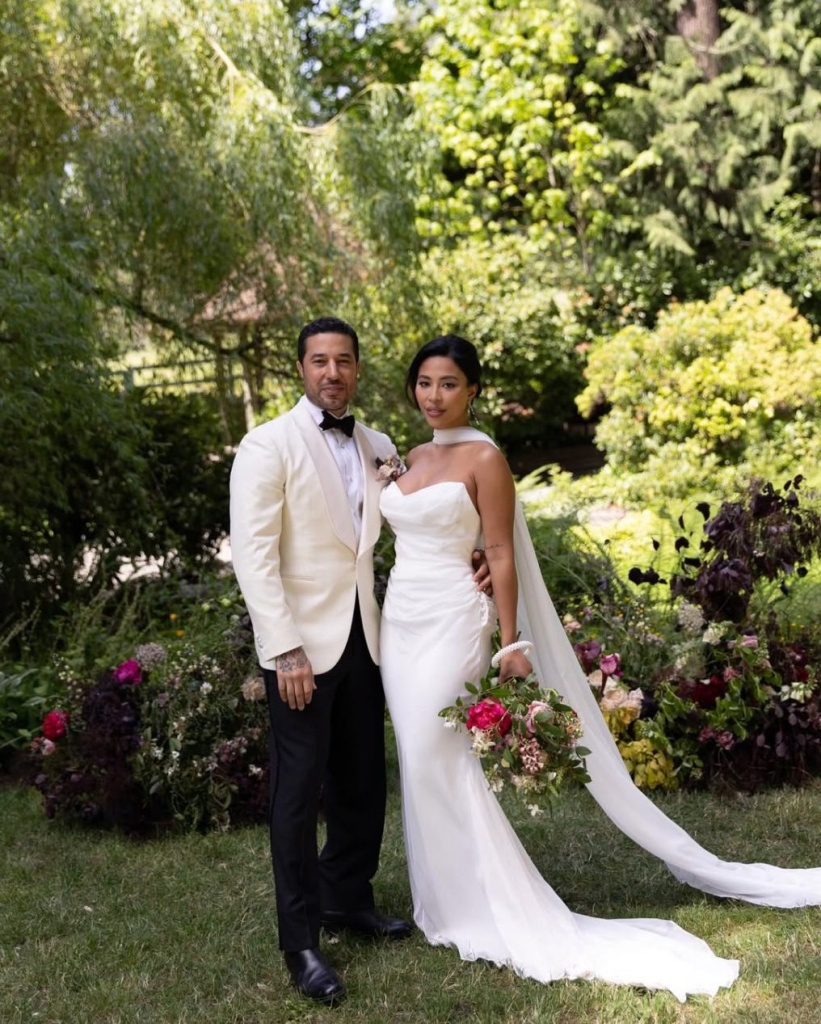
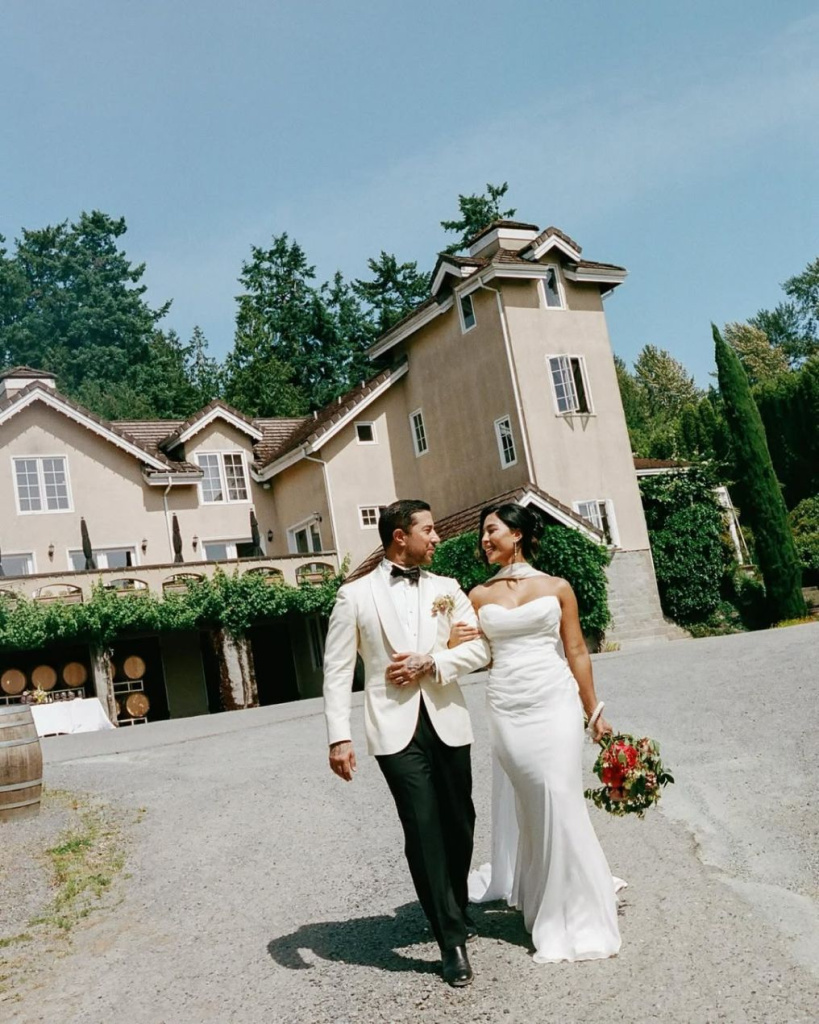
A detailed timeline keeps everyone coordinated and your day flowing smoothly. The rehearsal ensures everyone knows their role. Let's put this all together.
Planning Timeline Overview
- 12-18 months before: Announce engagement, set budget, determine guest count, choose date, book venue, hire wedding planner (if using one).
- 9-12 months before: Book key vendors (photographer, videographer, caterer, florist, DJ/band), start dress shopping, establish your wedding website.
- 6-9 months before: Send save the dates, finalize wedding party, order attire for wedding party, book accommodations and hotel blocks, plan ceremony details, start registry.
- 4-6 months before: Order invitations and stationery, plan reception details (menu, cake, décor), book hair and makeup, finalize song selections, schedule menu tasting.
- 2-3 months before: Finalize all vendor details and create day-of timeline, apply for marriage license, attend dress fittings, order wedding cake, plan rehearsal dinner.
- 1 month before: Mail invitations, finalize ceremony and reception programs, break in your shoes, final venue walk-through, confirm all vendor details, create seating chart after RSVPs arrive.
- 1-2 weeks before: Final dress fitting, final vendor confirmations, pack for honeymoon, prepare vendor payments and tips, rehearsal and rehearsal dinner, marriage license, beauty prep.
- Day before: Drop off items at venue (décor, favors, emergency kit, seating chart), rehearsal, rehearsal dinner, hydrate, get good sleep.
- Wedding day: Get ready, celebrate, be present, trust your team, enjoy every moment.
Rehearsal Logistics
Schedule your rehearsal the evening before the wedding at the ceremony venue. Invite everyone with a role: wedding party, parents, officiant, ceremony readers, and anyone else participating.
Walk through the entire ceremony start to finish at least twice: processional order and pacing, where everyone stands, how to hold bouquets and move during the ceremony, when and how rings are exchanged, recessional order and pace.
Address practical questions: What if someone faints? Where do bouquets go during the ceremony? How slowly should we actually walk? Your wedding coordinator or officiant leads this—they've done it countless times.
The rehearsal dinner follows. This is typically more casual than the wedding itself—a chance for your closest people to gather without the larger wedding's formality. Traditionally, the groom's family hosts, but many couples host themselves or split costs with both families.
Step 16 – The Wedding Day


You've planned for months. You've made thousands of decisions. Now it's time to release control, trust your team, and be fully present for the day you've created. Let's make sure you're prepared for a smooth, joyful experience.
Getting-Ready Logistics
Start your day earlier than feels necessary. Rushed getting-ready time creates stress that affects everything else. Build in buffer time for delays, unexpected issues, or simply savoring these moments with your closest people.
- Create the right atmosphere: Choose your getting-ready location thoughtfully. Natural light is ideal for photos and makeup application. Ensure enough space for everyone (hair and makeup artists, photographer, wedding party, family who'll stop by). Keep it relatively calm—this isn't the time for chaos or drama.
- Eat breakfast: We're serious about this. You're going to be standing, greeting hundreds of people, dancing, and running on adrenaline. Eat protein, complex carbs, and stay hydrated throughout the day. Your wedding coordinator or designated person should ensure you actually eat during cocktail hour or have plates ready when you sit for dinner.
- Stay on timeline: Your hair and makeup artists will have a schedule. Stick to it. If photo time is 2pm, honor that. Your photographer has calculated timing for specific lighting. Trust their expertise.
Emergency Kit Essentials
Designate someone (maid of honor, wedding planner, responsible bridesmaid) to carry an emergency kit. Pack it the week before so you're not scrambling day-of:
- For attire emergencies: Safety pins (multiple sizes), fashion tape (for keeping necklines and straps in place), needle and thread (white and colors matching your wedding party attire), stain remover pen, clear nail polish (for stocking runs), extra earring backs, bobby pins and hair elastics, static guard.
- For beauty touch-ups: Your lipstick, powder or blotting papers, breath mints, travel-size deodorant, perfume, makeup for touch-ups, hair spray, floss and toothbrush.
- For comfort and health: Pain reliever (headaches, cramps), antacids, Band-Aids (new shoes cause blisters), tissues, feminine products, any prescription medications you might need.
- For unexpected situations: Small scissors, phone charger, copies of vendor contact information and timeline, snacks that won't stain (granola bars, crackers), water bottles, umbrella (if outdoor elements are involved).
Delegate Everything
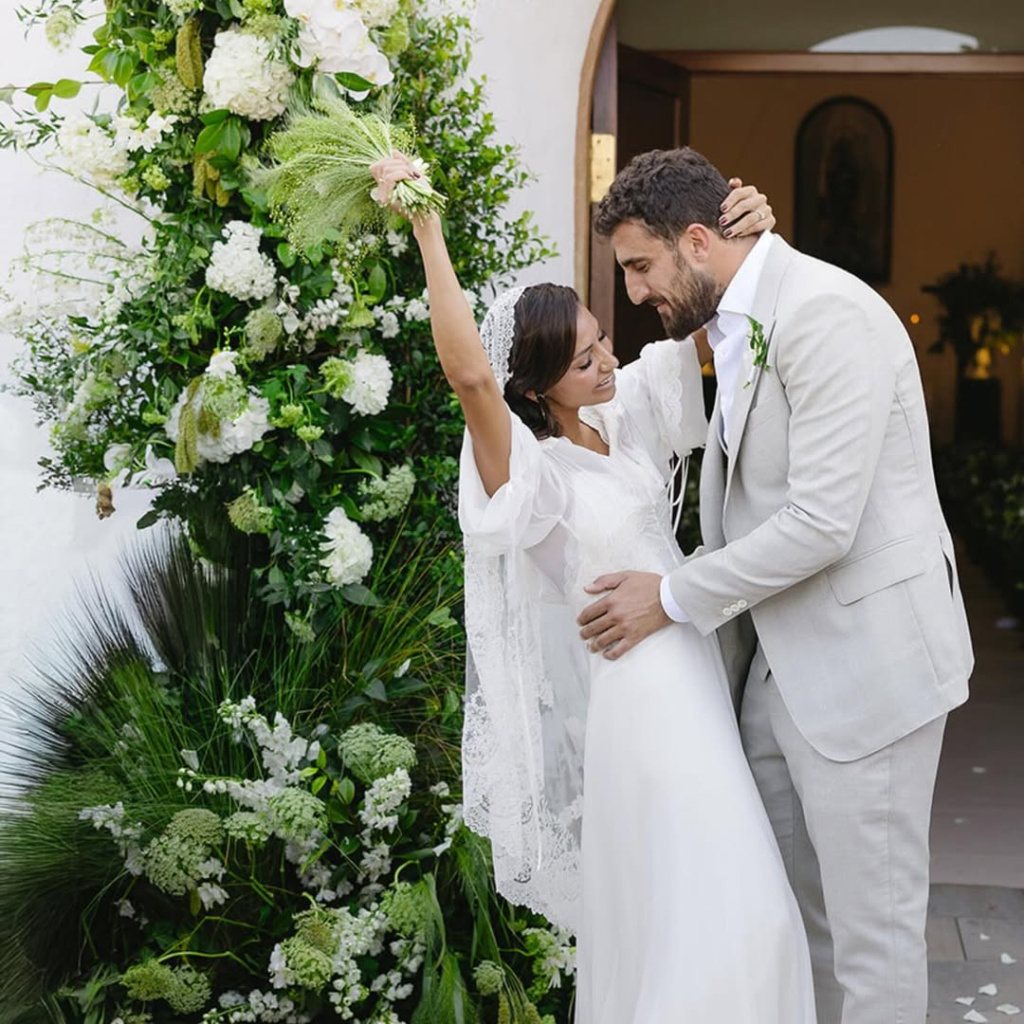

This is not the day for you to manage logistics. You've hired vendors and designated a coordinator or trusted people for exactly this reason.
Your wedding coordinator handles vendor management, timeline execution, problem-solving, and keeping everything moving. Let them do their job. They'll manage crises you never even know happened. Maid of honor and best man manage the wedding party, hold rings and bouquets, handle the marriage license, keep speeches on track, and generally support you throughout the day. Designated family members or friends can handle specific tasks: ensuring elderly relatives have seats and transportation, gathering family for formal photos, managing gift table and cards, coordinating vendors who need access to private spaces.
Trust your vendors: Your photographer knows how to capture moments. Your DJ knows how to read the room. Your caterer knows when to serve dinner. You hired professionals—let them be professional.
Mindset for the Day
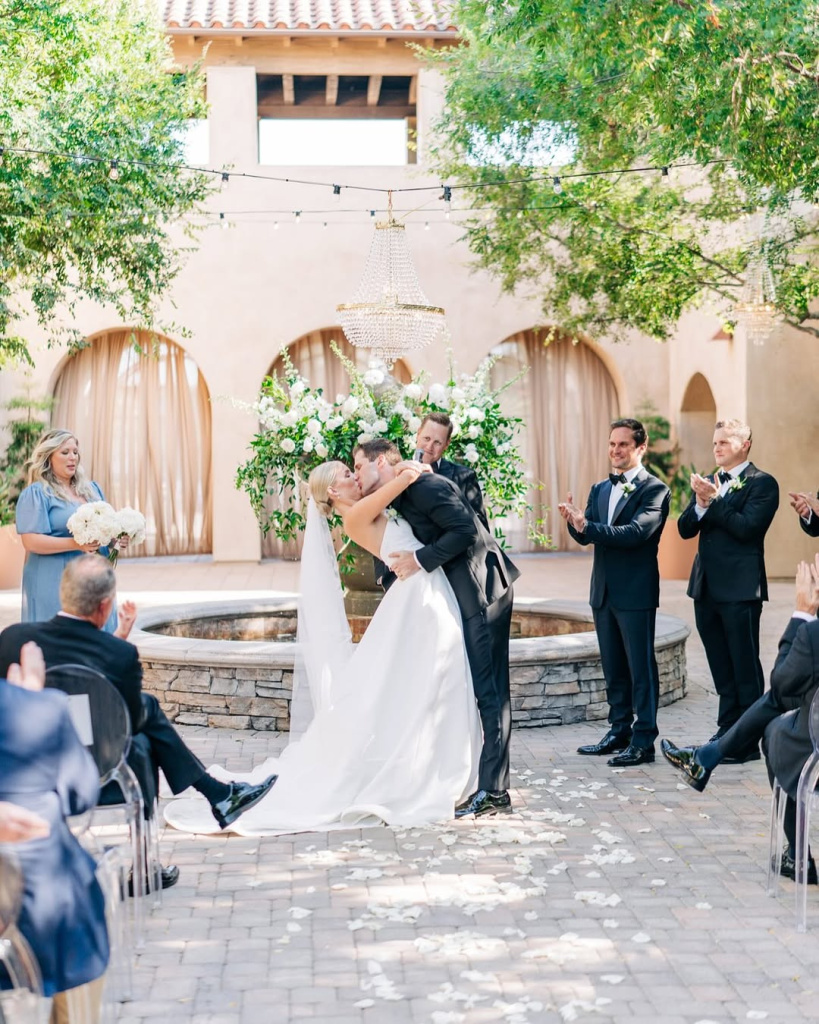
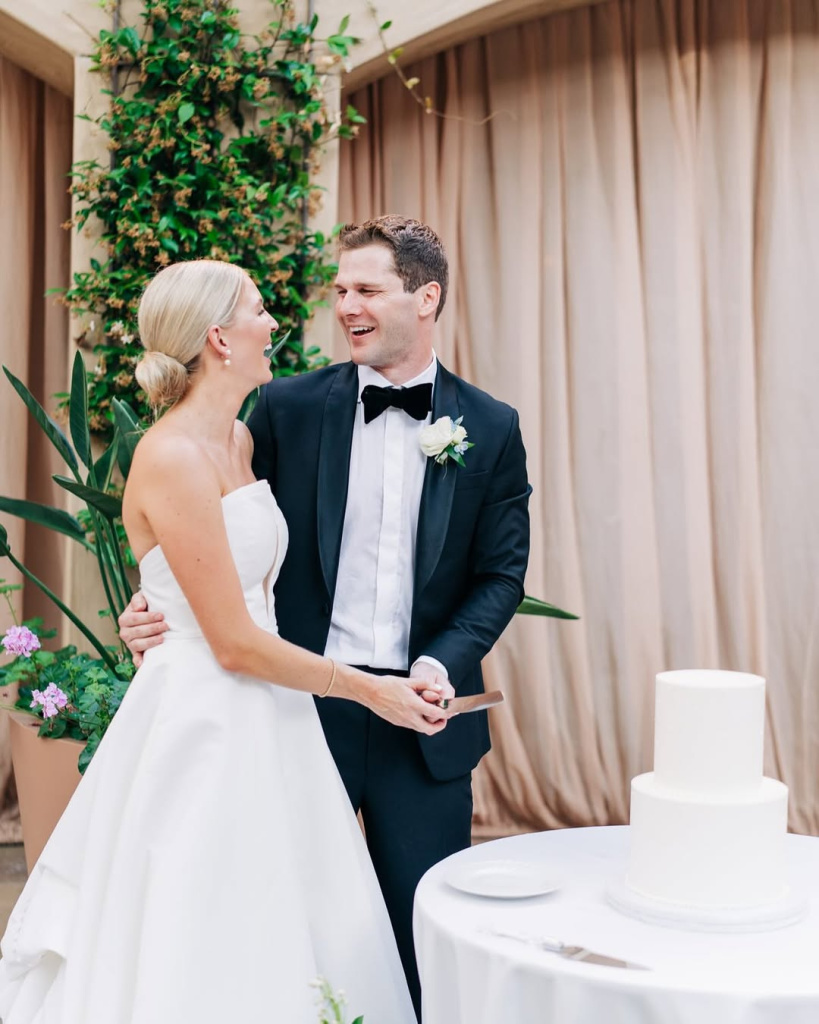
What matters most on your wedding day might surprise you. It's not about perfection—it's about presence.
- Be present: Put your phone away. Don't check social media. Don't worry about whether the napkins are exactly the right shade of blush. You planned beautifully—now experience what you created.
- Things will go wrong: A vendor might be slightly late. The weather might not cooperate. Someone might spill wine. Your great-aunt might give an unexpectedly long toast. None of it will matter in your memories. What matters is that you're marrying someone you love, surrounded by people who care about you both.
- Observe the details you'll want to remember: How your partner's hand feels when you first see each other. Your parent's expression during the ceremony. The sound of everyone laughing during toasts. The feeling of the first dance. These sensory memories matter more than perfectly styled tablescapes.
- Take intentional pauses: Step away with your new spouse for five minutes. Look out at everyone celebrating you. Sneak away during reception for private photos at sunset. Savor a quiet moment before grand entrance. These pauses become some of your most treasured memories.
- Let emotions happen: If you cry during vows, beautiful. If you laugh during the ceremony, perfect. If you're overwhelmed with gratitude, embrace it. Authentic emotion makes your wedding real and meaningful, not performed perfection.
- Remember the purpose: This day is about committing your lives to each other. The flowers, the dress, the cake—they're lovely, but they're decoration around the real event, which is your marriage beginning. Keep that perspective and everything else falls into proper priority.

Your Dream Wedding Starts Now


You've got the roadmap. Every decision, every timeline, every tip you need to plan a wedding that's authentically, beautifully yours. No two weddings are identical because no two couples are identical—and that's exactly how it should be.
Some of you will follow this guide step-by-step, checking boxes with satisfying precision. Others will jump around, prioritizing what matters most to you and adapting the rest. Both approaches work perfectly. This guide serves you, not the other way around.
Planning a wedding is genuinely one of the most complex events you'll ever organize. Be patient with yourselves. Extend grace when things don't go perfectly. Laugh at the absurdity when you're debating charger plate colors at midnight. Remember that every decision is temporary stress leading to one extraordinary day.


More than the day itself, you're building the foundation for your marriage. The compromise, communication, and teamwork you practice during planning? Those skills serve you for decades to come. The way you navigate family dynamics, budget discussions, and conflicting visions reveals how you'll handle life's bigger challenges together.
So yes, plan your dream wedding. Sweat the details that matter to you. Create beauty, meaning, and celebration. But also zoom out regularly and remember: you're not just planning a wedding. You're beginning a marriage. And that's the real dream worth pursuing.
Now go create something beautiful. We're rooting for you every step of the way.









